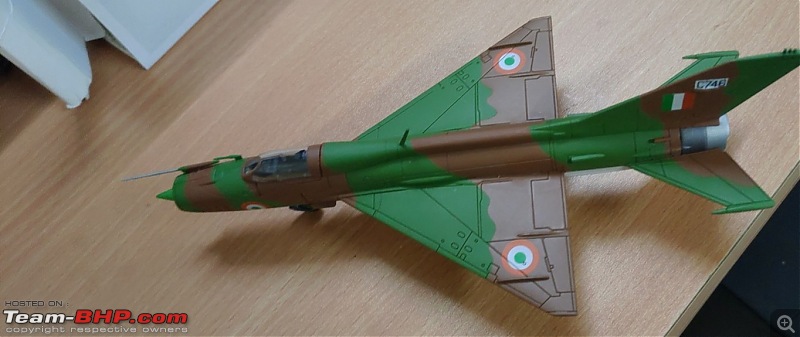1:72 Saab J-35F Draken Swedish Air Force (Swedish: Svenska Flygvapnet or just Flygvapnet), F16, Yellow 32 (Altaya)
The Saab 35 Draken ('The Kite' or 'The Dragon') was a Swedish fighter aircraft developed and manufactured by Saab between 1955 and 1974. It was the first fully supersonic aircraft to be deployed in Western Europe.When it was conceived in the early 1950s, Saab’s Draken was a very radical and unusual machine.
Its unorthodox design allowed it to easily surpass the speed of sound, making it Sweden’s first supersonic fighter aircraft and one of Europe’s best performing fighters. The Draken had a successful career with a number of air forces and remained in service 50 years after its maiden flight – quite an achievement, especially considering that two successors(J-37 & JAS-39) have been built!
The Draken was developed to replace Sweden's first generation of jet-powered fighter aircraft, the Saab J-29 Tunnan and, later, the fighter variant (J-32B) of the Saab 32 Lansen. It featured an innovative double delta wing; in order to test this previously-unexplored aerodynamic feature, a sub-scale test aircraft, the Saab 210, was produced and flown. Developed in Sweden, the Draken was introduced into service with the Swedish Air Force (SAF) on 8 March 1960. Early models were intended purely to perform air defence missions, the type being considered to be a capable dogfighter for the era.
The Draken functioned as an effective supersonic fighter aircraft of the Cold War period. In Swedish service, it underwent several upgrades, the ultimate of these being the J-35J model. By the 1980s, the SAF's Drakens had largely been replaced by the more advanced Saab 37 Viggen fighter, while the introduction of the more capable Saab JAS 39 Gripen fighter was expected in service within a decade, although delayed. As a consequence of cutbacks and high maintenance costs, the SAF opted to retire the Draken during December 1999. The type was also exported to Austria, Denmark, Finland, and the United States; the last operated the type as a training aircraft for test pilots.
The J-35F was the definitive Draken variant, which had greatly improved avionics and weaponry compared to earlier Draken variants. 230 J-35Fs were delivered between 1965 and 1972. This variant had improved electronics and avionics, e.g. integrated radar, aim and missile systems. The aircraft's main armament were IR and SARH versions of the Hughes Falcon missile originally intended for the J-35D, but one of the cannon was removed to make space for more avionics. It had a Hughes N71 Infra-red search and track sensor under the nose.
A whole new weapons suite was fitted in the J-35F, the primary change being the ability to carry the semiactive radar homing (SARH) Rb 27 AAMs and under each wing, a single heat-seeking Rb 28 AAM or an Rb 24. Both the Rb 27 and Rb 2 Both the Rb 27 and Rb 28 were Swedish-built copies of the American Hughes AIM-4 Falcon, but featured a number of improvements compared to the American missile. Because the RB 27 was too heavy to be carried on the wing pylons, only two could be attached to the underside of the fuselage. Although the J35F had a top speed of Mach 2, this was limited to Mach 1.4 when four AAMs were carried. Because of the extra avionics, which included an upgraded radio and sighting system, the port Aden cannon was deleted and the J35F only had one Aden M/55 with either 90 or 100 rounds in the right wing. Maximum weapons load was considerably increased to 4 082 kg (9 000 lb).
Further changes on the J35F included a revised cockpit with updated navigation, autopilot and communications systems. Later production J35Fs were fitted with S-71N infrared target seekers, which were Hughes AN/AAR-4 infrared detectors built under license by Ericsson.
The first J35F, which was actually a modified J35A, made its maiden flight on 22 December 1961 and was later joined by three other modified J35As in the Filip development programme. On 26 June 1964 the first of 230 production examples took off on its maiden flight. These were the last new-build Drakens for the Flygvapnet. Deliveries began to F13 Wing at Norrköping in mid-1965.
For such a radical aircraft the tailless double-delta Draken was amazingly successful. Many unique and innovative aircraft have ended up performing poorly, but the Draken was almost faultless. Its large production run and export orders are testament to its quality and effectiveness. As the air forces of Sweden, Finland, Austria and Denmark would probably agree, it was one of Saab's finest jet fighters.

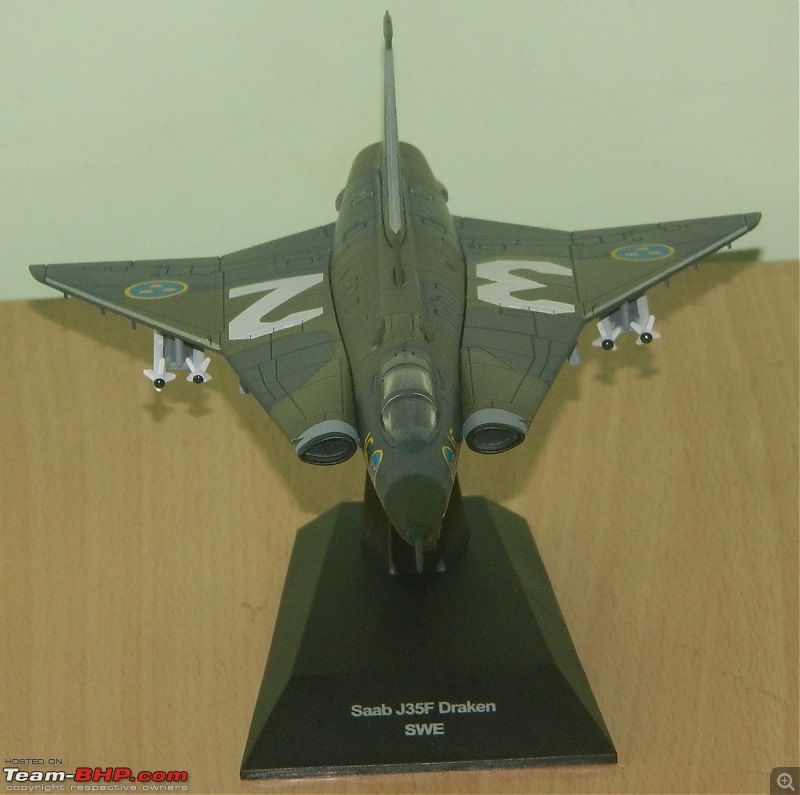

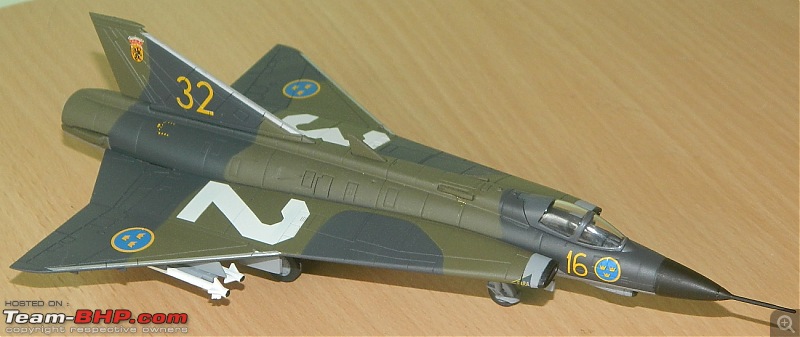


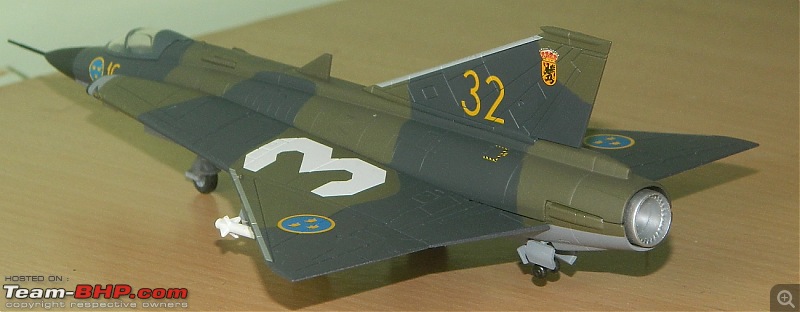
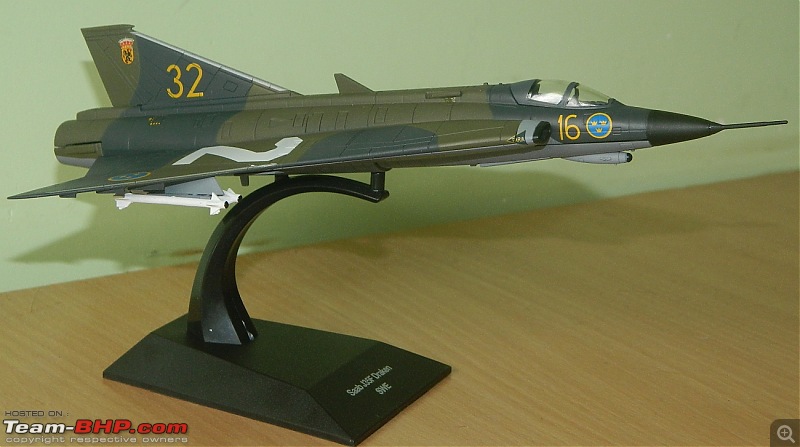


The landing gear was complemented by two retractable tail wheels, an arrangement that permitted a tail-down landing to gain the full aerodynamic braking effect of the wing. Such a landing, combined with the use of a braking parachute, made possible a landing run as short as 610m for the J-35.


The two Saab fighters in my collection. The J-35F flanked by a Czech AF JAS-39C Gripen.

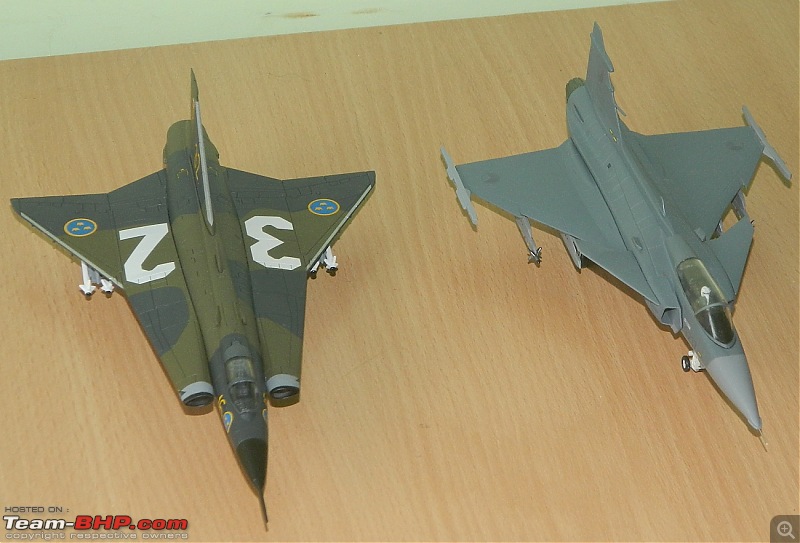


 (1)
Thanks
(1)
Thanks







































